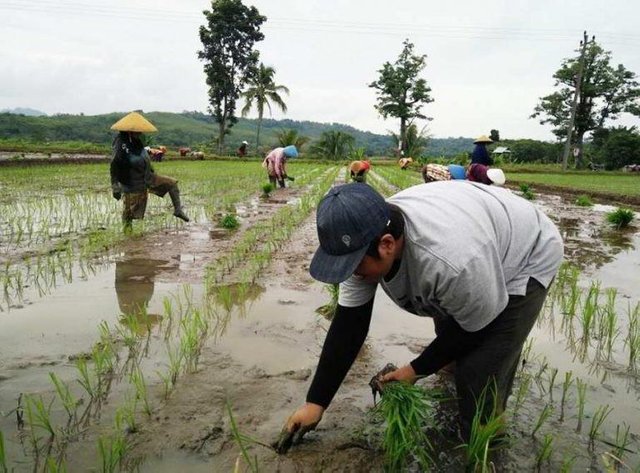Indonesia's inability to meet rice demand in Indonesia may be due to a lack of knowledge on the way rice cultivation is still low at the farm level. Rice cultivation may be a hereditary activity that has been done since the ancestors, but with advances in technology and science, farmers should be able to implement a more efficient and productive planting system so that food needs will be fulfilled from domestic production and the welfare of farmers will be increasingly increased.
Farmers should not stop learning about the latest techniques of rice cultivation ranging from understanding the growing requirements and technical implementation of rice fields.


Indonesia's inability to meet rice demand in Indonesia may be due to a lack of knowledge on the way rice cultivation is still low at the farm level. Rice cultivation may be a hereditary activity that has been done since the ancestors, but with advances in technology and science, farmers should be able to implement a more efficient and productive planting system so that food needs will be fulfilled from domestic production and the welfare of farmers will be increasingly increased.
Farmers should not stop learning about the latest techniques of rice cultivation ranging from understanding the growing requirements and technical implementation of rice fields.
GROW TERMS
In order to grow properly, rice plants require a high rainfall of approximately 1500-2000 millimeters per year with an altitude between 0-1500 meters above sea level with an optimum temperature of 23 degrees Celsius. Rice will grow optimally with direct sun exposure unhindered by anything including shade trees. The availability of water in planting rice paddy is very absolute although the rice can actually be planted in all seasons. A suitable soil for growing rice is soil containing clay, sand, and dust.
TECHNICAL IMPLEMENTATION OF CULTIVATION
Implementation of the technique of planting rice paddy should start with the measurement of soil acidity so that the soil can be given additional lime if the soil is too acid. To measure the level of acidity of the soil suitable for rice plants, you can use a liquid pH tester, pH meter, or litmus paper. Measurements are only made at a given sample point taken by zigzag.
